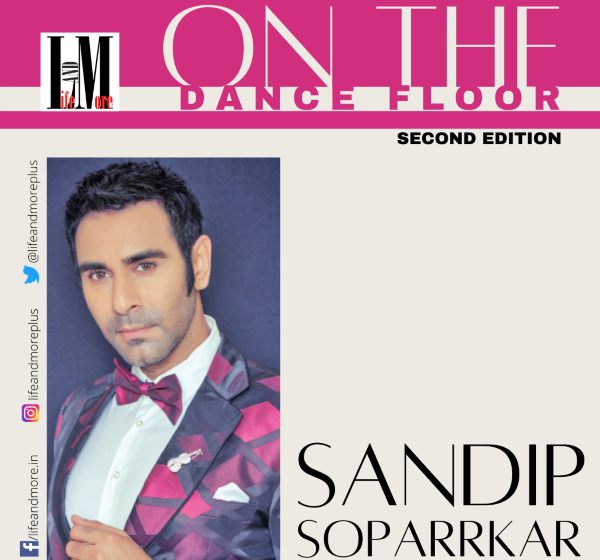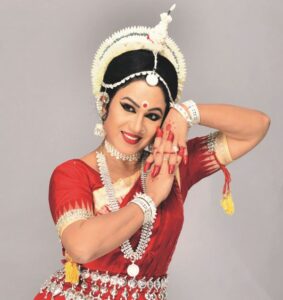Synergy of dance with camera

Recently young Indian classical dancers were introduced to a very interesting workshop organized by award winning Odissi dancer Shubhada Varadkar. The two days intensive workshop Learn to capture the grace of dance was conducted online by renowned cinematographer Shanti Bhushan Roy.
An artiste in her quest for perfection Varadkar, a performer, a choreographer, a writer, a guru and a guide, all rolled into one, has taken the divine dance form to transcendental heights with her flawless performance and mentoring of aspiring artistes. She is an artist who does not surrender to existential faith, rather symbolises the triumph of an artiste over life-threatening adversities. Films Division and PSBT’s documentary, on her inspiring life story Peacock Plume is appreciated by one and all for its inspirational impact.
Recipient of Senior Fellowship by the Ministry of Culture, Varadkar has been teaching, performing and conducting dance workshops in India and abroad for more than two decades. I spoke with her in regards to this unique workshop that her institute conducted for aspiring dancers. Excerpts:

What made you think of a workshop for dancers on camera dance?
We dancers, especially classical dancers, prefer dancing to live audiences. As per our ancient scriptures of Rasa theory, the audience is a very important aspect of Rasa Utpatti. When bhav (emotion) is expressed by artist to the viewer, by the visionary imagination (Pratibha) of the viewer an emotional connection gets established between artist and the viewer leading to Rash Utpatti.
Dancing during this pandemic is restricted to the digital medium. In the present time our art has transcended all the boundaries and barriers of the country, religion, race. Initially, we thought it was difficult to appreciate dance performances on digital platforms but now slowly we are tuned to digital media. We need to know the nuances of the camera and use the digital platform to create Rasa. This pandemic has given us the necessary opportunity to expand our horizon and chip away at the wall of exclusivity. Streamed or filmed performances have a greater value now, so knowledge about cinematography will be helpful to expand our productions into the digital sphere. Hence, a workshop on how to enhance one’s dance performance for camera was the need of the hour.
Why did you choose Shanti Bhushan Roy for this session?
Shanti Bhushan Roy is a cinematographer of the Documentary Peacock Plume made by Films Division and PSBT on my life journey. I was introduced to him by the Director of the film Shabnam Sukhdev. From day one I was impressed not only by his craft but his skillful explanations and narrations. An alumnus of FTII Pune, Bhushan is an award winning, critically-acclaimed cinematographer. During the making of Peacock Plume I got enamoured by the art of filmmaking. Peacock Plume was selected for the Stuttgart Film Festival and I was invited to give a talk after the screening. To my surprise, I saw Bhushan in Germany Stuttgart at the same festival giving a lecture on cinematography. I realised that he has not only mastered the medium of film but also television, documentary, web and digital audio visual and has a very evolved sense of aesthetics. So, you tell me who better than him to guide the newer generation of dancers for this workshop.
How did the session help the dancers?
This session which I titled as Learn to capture the grace of dance, as the name suggests, truly helped us to capture some of the wonderful movements of dance. Shanti Bhushan ji explained the entire spectrum of angels, lights, and few thumb rules used in shooting with different cameras. We had a wide range of participants with diverse dance styles and different age groups. The explanation was clear and precise, it was very engaging with assignments and project work too. Even the eight-year-old youngest participant of the workshop made beautiful videos with her mobile camera. The detailing went to such a minute extent that by the end of the workshop all the participants learnt to place the cameras of their laptop in the best possible angle during the session.
How is dancing for a live audience different from dancing for camera and which is your favourite?
Dancing for the audience and for the camera are two different aspects of performing art which an artist has to understand at macro and micro level. Being an economist, I always look at any problem from these two angels. At macro level artistes have a larger spectrum, he has to think about the stage in a live performance whereas for camera he has to concentrate on the lens capturing the movement. There is a different warmth of the audience watching and responding to you in stage performance, whereas there is an intense but silent absorption of the camera during shooting of a performance, both situations are challenging. An artistes can master the technique to face both the mediums, and move and express in a performance by adopting different techniques. For stage it can be exaggerated and for camera restricted. At micro level, everything is condensed; it is just you and your art. At micro level, it doesn’t matter if you have one person sitting in the audience or thousands of fans applauding or a camera capturing. When an artiste becomes one with his art the realm of flavour or rasa is created. It is a perfect space where artiste evolves towards perfection that’s my favourite space. At macro level, I like performing for audience where I am emotionally connected to them. Live, breathing, applauding audience always gives us positive energy. At micro level, my art gives me that irrespective of the actual or virtual presence of the audience.
What other workshops is your institution planning?
Every year my institute organises workshops on different aspects of art to prepare my students and the young generation to relish the aesthetic beauty and meaningfulness of dance. Indian classical dance made a strong appeal to the great contemporary sculptors throughout the passing ages, and they froze these figures into a matchless record of rhythmic grace. And just as those unknown sculptors were inspired by art of nameless dancers of their days, the dancers recapture their inspiration by studying the sculptures. Thus, my next workshop will be on the visual art of sculpting, and another one about composing with rhythm, harmony, balance and contrast in graphic design.
Sandip Soparrkar holds a doctorate in world mythology folklore from Pacifica University USA, an honorary doctorate in performing arts from the National American University, He is a World Book Record holder, a well-known Ballroom dancer and a Bollywood choreographer who has been honored with three National Excellence awards, one National Achievement Award, Dada Saheb Phalke award and Dr APJ Abdul Kalam Bharat Puraskar by the Government of India. He is also the recipient of the prestigious Rabindranath Tagore Prize for Social Achievement. He can be contacted on sandipsoparrkar06@gmail.com


